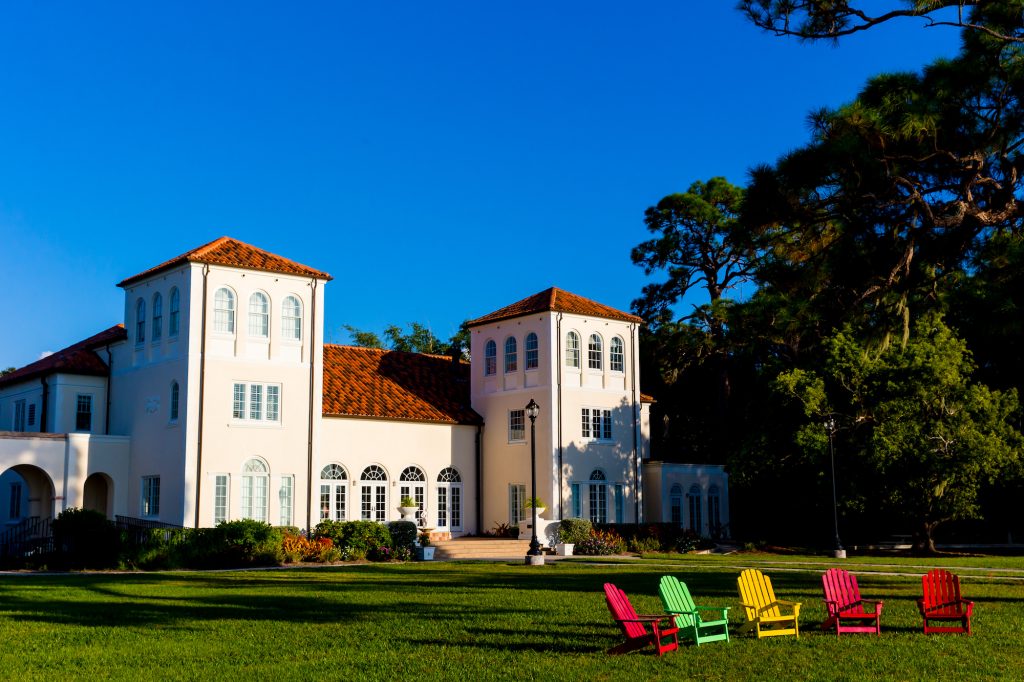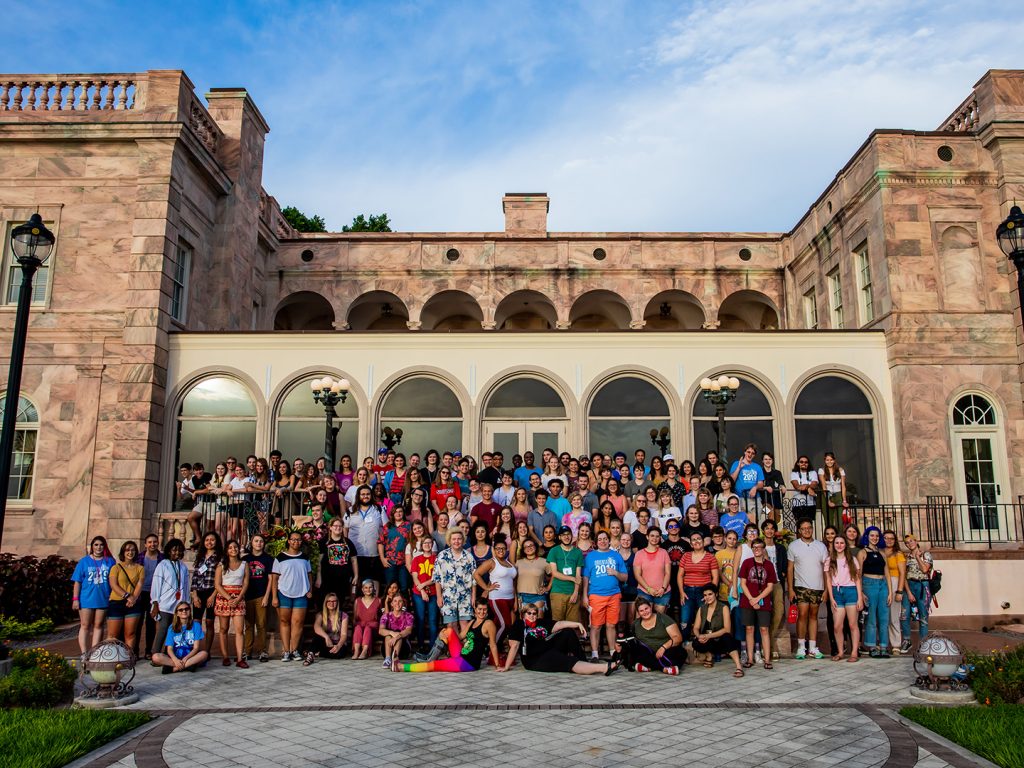The history of New College goes back to the late 1950s when, at the behest of the local Chamber of Commerce, citizens banded together to create a local college to complement the growing city’s art museum, symphony orchestra and theaters.
A College Ahead of Its Time.
The history of New College goes back to the late 1950s when, at the behest of the local Chamber of Commerce, citizens banded together to create a local college to complement the growing city’s art museum, symphony orchestra and theaters. The private new college was designed by a group of educators who believed in the power of the mind and wanted to free both students and faculty from the limits of lock-step curriculum and a focus on credit hours and a GPA.
These founders were half a century ahead of their time in promoting “active, hands-on-learning” to achieve “competence” and “real mastery.” The concepts of New College’s educational philosophy, developed over time by Philip Hiss, John Gustad, John Elmendorf and Douglas Berggren, appealed to the very best students across the country. Such was New College’s unique role in the world of academia that a full-page article in Time magazine was devoted to the matriculating class of 1967.
This is New College.
New College Stories
Read some of our New College stories and be amazed, intrigued, inspired and motivated to create some of your own.
Honors & Accolades
We’ve accomplished quite a bit in a little over a half-century.
History Highlights
- Oct. 11, 1960: New College is founded as a private college.
- 1961: Trustees obtain options to purchase the former Charles Ringling estate on Sarasota Bay and 12 acres of airport land facing U.S. 41 held by private interests. The two pieces form the heart of the campus.
- Nov. 18, 1962: The campus is dedicated. Earth from Harvard is mixed with soil from New College as a symbol of the shared lofty ideals of the two institutions.
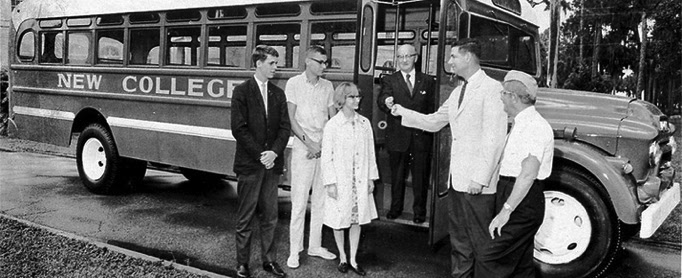
- 1964: Charter class enrolls and graduates in 1967.
- 1969: Faculty adopt a contract system emphasizing the role of individualized study plans, field study and undergraduate research.
- 1971: Caples Campus is created through a gift of Mr. and Mrs. Ralph Caples; a new environmental studies fund enables New College to conduct applied environmental research, one of the first such programs in the nation.
- 1975: New College joins the State University System as part of the University of South Florida, with which it shares a campus.
- 1983: Sudakoff Conference Center opens on the Pei Campus.
- 1985: New College Alumni Association is formed.
- Nov.1, 1986: New library is dedicated; two years later it is named in honor of benefactor Jane Bancroft Cook. A $2 million gift establishes New College’s first endowed chair.
- 1988: USA Today classifies New College as among the 43 “choosiest” colleges in the nation.
- 1990: A new fitness center is constructed on the Pei Campus.
- 1993: Time magazine’s Money Guide lists New College as the No.2 “Best College Buy” in America; Caples Fine Arts Complex opens.
- 1996: Ground is broken for the Betty Isermann Fine Arts Building on Caples campus.
- 1998: Student Independent Study Project gives rise to the Four Winds Café, a popular student-run coffee house on campus; first season of New Music New College.
- 1999: Responding to student initiatives, psychologist Gordon Bauer establishes a manatee research project at Mote Marine Laboratory.
- 2000: The $6.6 million R.V. Heiser Natural Sciences Complex opens.
- 2001: The $2.5 million Pritzker Marine Biology Research Center opens.
- July 1, 2001: New College achieves independence as the 11th member of the State University System and is designated by the Florida Legislature as the “Honors College for the State of Florida.”
- 2006: Relocation of the USF Sarasota-Manatee campus to a new site gives expression to a bold new master plan, underwritten with $250,000 in state funds.
- 2007: Five new “green” residence halls open on East Campus; all adhere to LEED requirements and feature flat and gabled roofs and floor-to- ceiling windows in their common areas.
- 2008: Palm Court is restored with new palm trees and commemorative bricks and pavers.
- 2008: The Board of Trustees approves the 2008-2018 Strategic/Academic Master Plan “Enhancing Student Learning” to serve as a road map for navigating the terrain of academic change over the next 10 years. The Plan was developed over seven months with broad New College community participation.
- 2010: Hamilton Student Center is renovated, to include the Black Box Theater and lobby. The flexible space seats approximately 75 people and has its own control booth for sound and lighting.
- 2010: The Public Archaeology Lab opens, funded in part by a Federal grant for planning, equipment and salaries, and state capital funds (PECO). The 1,600-square foot facility is ideal for processing and interpreting artifacts, preparing archaeological site reports.
- 2011: New College celebrates its 50th anniversary (officially Oct. 2010) with a wide array of exciting activities on campus, including one of the most brilliant sunsets ever to be seen on the Bayfront.
- 2011: The Academic Center, known as ACE, opens for classes and faculty offices. The most ambitious new building in decades, it is awarded Gold LEED status for its sustainability. The plaza includes a modern Four Winds sculpture, the natural sun as central pivot, the sea and the wind felt in gentle and continuously moving lines around the sun.
- 2011: First Student Thesis Showcase takes place, an opportunity to highlight student research. The Juried Student Art Exhibition in Isermann Gallery becomes an annual event.
- 2012: The old Ringling seawall, constructed in 1925-26 on the Bayfront seawall, is dug out and replaced with stronger and more modern materials, funded by a state allocation of $2.5 million for the Seawall Restoration Project in 2008. It features a beautiful 1,000-foot balustrade along Sarasota Bay and a lighted paved esplanade bordered by low, curving seats. Restoration also includes an intertidal lagoon with a sloping shoreline and additional intertidal habitat. An open-air classroom has been added at the north end.
- 2012: Dr. Donal O’Shea becomes the College’s fifth president.
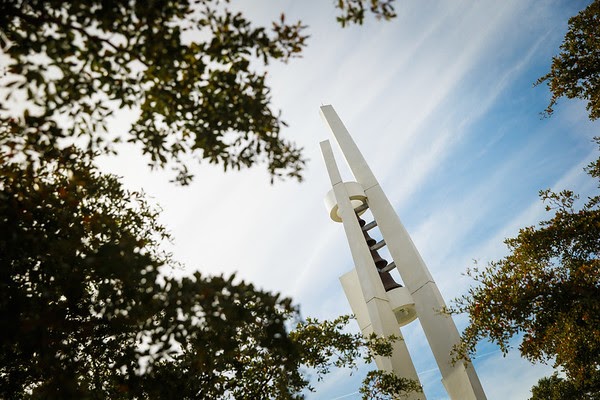
- 2013: At President O’Shea’s inauguration in February, a new bell tower in front of the library is dedicated, underwritten with a gift of $400,000 from Sarasota philanthropist Beverly Koski. With its forceful, spiraling, ascending flow, the tower wins a Precast/Prestressed Concrete Institute Design Award.
- 2013: The largest number of New College undergraduates – 197—receive their degrees. (To date, there have been 5,801 Bachelor of Arts recipients).
- 2013: A partnership with the Daughters for Life Foundation is made to enroll Middle Eastern women starting in fall 2014, at in-state tuition rates.
- 2014: In July, the College establishes the Center for Engagement and Opportunity, a multi-faceted program to help our students link their education with the world of work. Funded with both recurring and nonrecurring funds, and supported at the start-up by several major donors, the CEO’s staff mentor and coach students on career exploration, internships and fellowships, connecting them to external corporate and community members. The CEO is located at the heart of the campus, in Cook Library, alongside the Academic Center.
- 2016: The Marine Biology program welcomes the research vessel Limbatus (black-tipped shark), a 24-foot pontoon boat designed for hands-on close-to-shore research and education projects.
- 2016: Food Forest Carbon Farm is officially planted on the Caples Campus with over 50 different species of fruiting trees, edible greens, wildflowers, starch crops and spices.
- 2016: A Master’s in Data Sciences program is launched in February, following accreditation by SACSOS. The first students are awarded their degrees at Commencement 2017. All seven of the graduates head to excellent jobs in their field, most with the companies for which they interned.
- 2016: The Florida Board of Governors invites New College to Board of Trustees to submit a transformative plan for growth. Over six years, the College plan, approved by both the Board of Trustees and the Board of Governors, calls for the College to expand both our student population and faculty by 50 percent, to about 1,200 students and 120 tenure-track professors, while maintaining a 10:1 student-faculty ratio.

- 2017: The C4 Consortium officially changes its name to the Cross College Alliance. The four member colleges share a common vision of building an educational network that amplifies and expands learning opportunities for their collective 18,000–plus students, plus faculty and staff members. Member colleges are State College of Florida, Ringling College of Art & Design, New College of Florida and the University of South Florida, Sarasota-Manatee.
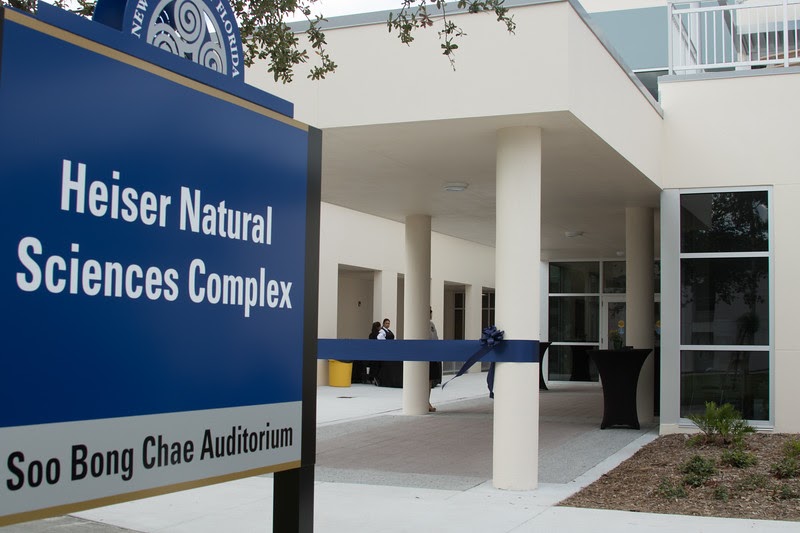
- 2017: In the fall, a 22,000-square-foot addition to the Heiser Natural Sciences Center Complex opens, increasing space by more than 50 percent, sufficient for the current enrollment. Funded by the state, the $9.7 million addition includes biology, chemistry and physics teaching labs, three biology research labs, 14 offices, a computer science reading room and a conference room and classroom that can be converted to lab space, if needed.
- 2017: New College receives its first performance-based funding ($2.5 million) under the 10 metric model, based on our success in reaching the following metrics: increased student retention, average full-time wages of undergraduates one year after graduation, the number of students graduating in areas of strategic emphasis, and cost to students.
- 2017: New College receives $2.1 million in World Class Scholar funds for initiatives to increase our national academic standing, including student scholarships and recruiting exemplary faculty.
- 2017: The College receives $5.4 million in recurring funds to implement Phase 1 of the Growth Plan. The second year of funding, Phase 2, is already a priority in the BOG’s budget for 2018-19: Also part of the Growth Plan is a new multi-purpose facility, estimated to cost $42 million. A $4 million planning request for the new facility is part of our request for 2018-19.
- 2018: By February 12, eight new faculty members are hired for 2018-19. Seven more, for a total of 15 are projected to be hired for 2018-19.
- 2021: New College Board of Trustees elects Dr. Patricia Okker as the college’s next president and its first woman president.

